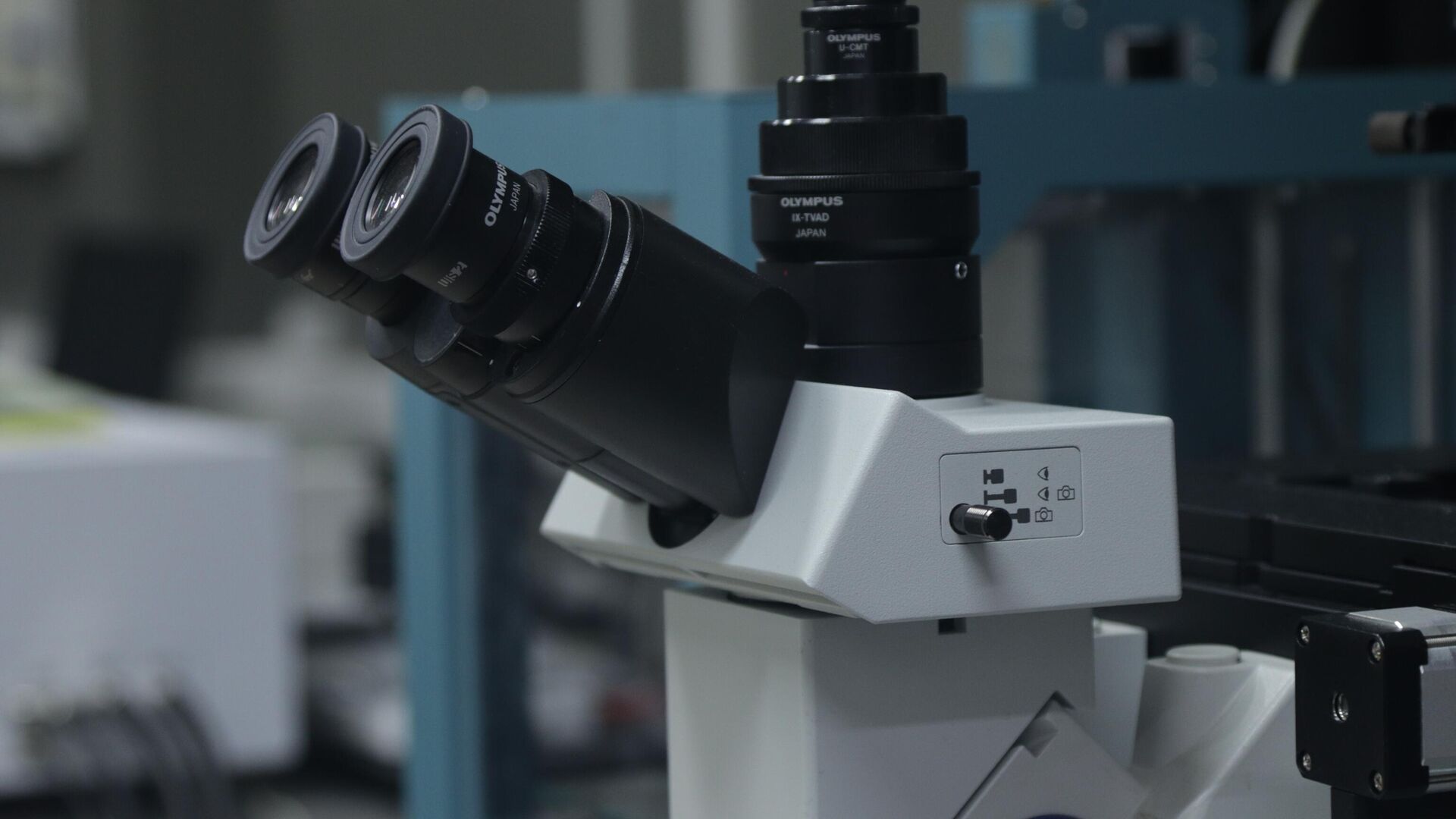https://sputnikglobe.com/20221205/clam-becomes-first-known-animal-to-make-its-own-antibiotic-1105078588.html
Clam Becomes First Known Animal to Make Its Own Antibiotic
Clam Becomes First Known Animal to Make Its Own Antibiotic
Sputnik International
Erythromycin is a type of antibiotic used to treat a number of bacterial infections, and until now, the antibiotic was thought to be only made by... 05.12.2022, Sputnik International
2022-12-05T22:23+0000
2022-12-05T22:23+0000
2023-04-21T10:42+0000
science & tech
animals
animals
animals
antibiotic resistance
antibiotics
https://cdn1.img.sputnikglobe.com/img/07e6/0b/0a/1103975373_0:160:3073:1888_1920x0_80_0_0_2a3cdddbb306bdec9d910eca6d3c2734.jpg
The Asiatic hard clam (Meretrix petechialis) has been found by researchers to make its own erythromycin. The clam is able to synthesize the complex antibiotic through particular mucus-rich cells in their protective, outer mantle tissue. The clam, which lives in mud flat environments, can synthesize, store, and secrete the antibiotic into the bacteria-rich habitat where it lives.Prior to the study, scientists were unaware of how clams resisted bacterial pathogens in their bacterial-dense populations when they lack adaptive, lymphocyte-based immune systems. Researchers began by searching for genes in the clam that changed their expression before and after infections. They then identified a gene encoding an enzyme as part of the formation of an intermediate compound in the biosynthesis of erythromycin."However, our results suggested that the erythromycin-producing genes in M. petechialis have an origin in animal lineages and represent convergent evolution with bacteria," said Professor Liu Baozhong, an author of the study who led a research team from the Institute of Oceanology of the Chinese Academy of Sciences (IOCAS)."We also documented erythromycin production in a related species, Meretrix lyrate, which suggests that the antibiotic may be more widely produced by marine invertebrates," said Yue, first author of the study published in the journal PNAS last week.Margaret McFall-Ngai, who is an expert in microbial interactions with marine mollusks at the University of Hawaii, notes that invertebrates don’t have a sophisticated immune system but will often “maintain very simple interactions with the microbial world—either they associate with a few species, or they just say no”.While the discovery is exciting for the Asiatic hard clam, it is also a groundbreaking insight into the environmental and immune defense abilities of invertebrates as a group, as well as a first look at the potential for resistance breeding.
Sputnik International
feedback@sputniknews.com
+74956456601
MIA „Rossiya Segodnya“
2022
News
en_EN
Sputnik International
feedback@sputniknews.com
+74956456601
MIA „Rossiya Segodnya“
Sputnik International
feedback@sputniknews.com
+74956456601
MIA „Rossiya Segodnya“
science & tech, animals, animals, animals, antibiotic resistance, antibiotics
science & tech, animals, animals, animals, antibiotic resistance, antibiotics
Clam Becomes First Known Animal to Make Its Own Antibiotic
22:23 GMT 05.12.2022 (Updated: 10:42 GMT 21.04.2023) Erythromycin is a type of antibiotic used to treat a number of bacterial infections, and until now, the antibiotic was thought to be only made by actinobacteria. Researchers are now revealing an unlikely animal which synthesizes its own erythromycin.
The
Asiatic hard clam (
Meretrix petechialis) has been found by researchers to make its own erythromycin. The clam is able to synthesize the complex antibiotic through particular mucus-rich cells in their protective, outer mantle tissue. The clam, which lives in mud flat environments, can synthesize, store, and secrete the antibiotic into the bacteria-rich habitat where it lives.
Prior to the study, scientists were unaware of how clams resisted bacterial pathogens in their bacterial-dense populations when they lack adaptive, lymphocyte-based immune systems. Researchers began by searching for genes in the clam that changed their expression before and after infections. They then identified a gene encoding an enzyme as part of the formation of an intermediate compound in the biosynthesis of erythromycin.
"The discovery made us wonder if erythromycin is synthesized in the clam," explains Xin Yue, a marine biologist at the Chinese Academy of Sciences in Qingdao, who adds that animals may be genetically engineered to make their own antibiotics, following the discovery of the Asiatic hard clam.
"However, our results suggested that the erythromycin-producing genes in M. petechialis have an origin in animal lineages and represent convergent evolution with bacteria," said Professor Liu Baozhong, an author of the study who led a research team from the Institute of Oceanology of the Chinese Academy of Sciences (IOCAS).
"We also documented erythromycin production in a related species,
Meretrix lyrate, which suggests that the antibiotic may be more widely produced by marine invertebrates," said Yue, first author of the study published in the journal
PNAS last week.
Margaret McFall-Ngai, who is an expert in microbial interactions with marine mollusks at the University of Hawaii, notes that invertebrates don’t have a sophisticated immune system but will often “maintain very simple interactions with the microbial world—either they associate with a few species, or they just say no”. While the discovery is exciting for the Asiatic hard clam, it is also a groundbreaking insight into the environmental and immune defense abilities of invertebrates as a group, as well as a first look at the potential for resistance breeding.

